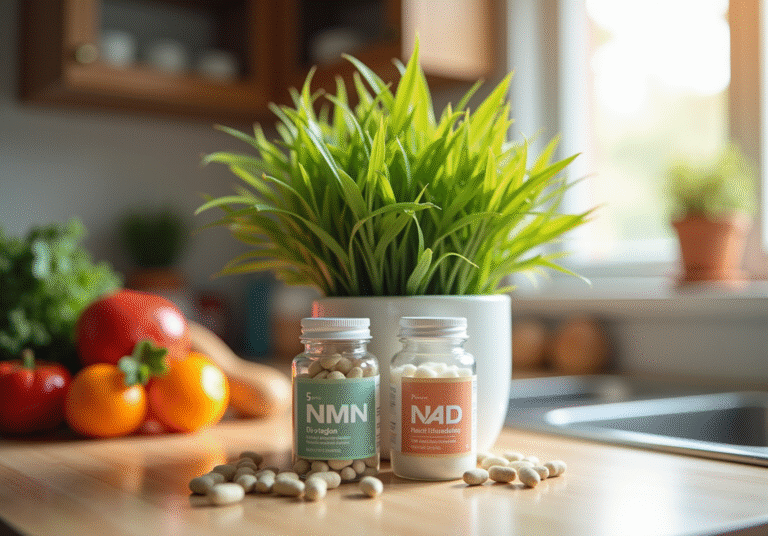Unlocking the Benefits of White Wine for a Healthy Lifestyle
Overview
The benefits of white wine for a healthy lifestyle are noteworthy. Not only does it contribute to improved cardiovascular health, but it also enhances lung function and may aid in cancer prevention. These advantages are attributed to its antioxidant properties, particularly when consumed in moderation.
Research supports these health claims, highlighting the importance of moderation to mitigate the risks associated with excessive alcohol consumption. By enjoying white wine responsibly, one can reap its benefits while maintaining a balanced lifestyle.
Introduction
Exploring the world of white wine reveals a delightful blend of flavor and potential health benefits, crafted from green and yellow grapes through a meticulous fermentation process. This rich composition, which includes antioxidants and organic acids, not only tantalizes the palate but also offers intriguing advantages for those seeking a healthier lifestyle.
However, as with any indulgence, one might wonder: how can we enjoy the pleasures of white wine while navigating its associated risks? This article delves into the multifaceted relationship between white wine and health, providing insights on how to savor its benefits responsibly.
Explore the Composition and Varieties of White Wine
White beverage, primarily crafted from green or yellow grapes such as Chardonnay, Sauvignon Blanc, and Riesling, undergoes a fermentation process that separates the juice from the skins. This results in its characteristic lighter color and flavor profile. Understanding the key components of white wine can empower consumers to appreciate the benefits of white wine and make informed choices about their beverage selections.
- Alcohol: Typically ranging from 8% to 14% ABV, with an average concentration of 10% ABV, alcohol can yield both positive and negative health effects depending on consumption levels. Moderate intake is frequently linked to specific health advantages, while excessive consumption presents dangers.
- Phenolic Compounds: These compounds, including flavonoids and non-flavonoids, are renowned for their antioxidant properties, which help combat oxidative stress in the body. Research indicates that these antioxidants may play a role in reducing the risk of chronic diseases. For example, total polyphenolic content (TPC) in Chardonnay varieties ranges from 329 to 403 mg GAE/L, highlighting their antioxidant potential.
- Acids: White beverages contain various organic acids, such as tartaric and malic acid, contributing to their crisp flavor and potentially assisting in digestion. These acids enhance the sensory experience of the beverage while providing digestive benefits.
- Sugars: The leftover sugar level differs considerably among various types of light-colored beverages, affecting both sweetness and caloric content. For instance, a 5-ounce glass of light-colored beverage contains approximately 121 calories and can have anywhere from 1.4g of sugar to higher levels, depending on the type.
Grasping these elements enables consumers to make knowledgeable decisions regarding which beverages to include in their diets, aligning with their wellness objectives. Sommeliers frequently emphasize the distinct advantages of different types of light beverages, mentioning that moderate intake can enhance a nutritious way of living while offering pleasure and the benefits of white wine. Furthermore, the light beverage market size is anticipated to experience significant expansion in the coming years, indicating the rising interest among health-aware buyers.
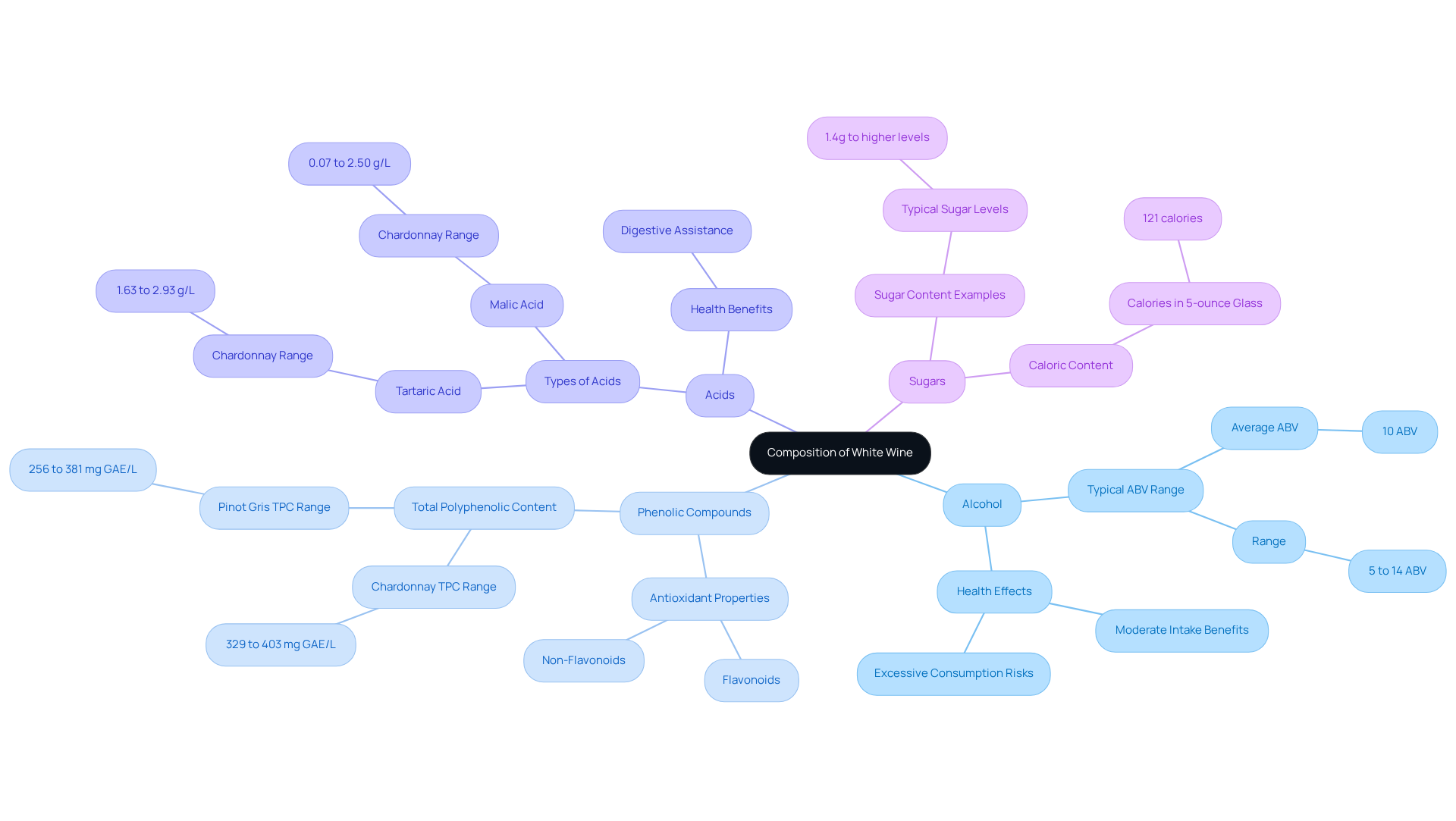
Examine the Health Benefits of White Wine
Research indicates that moderate consumption of white wine can offer several notable health benefits, including:
-
Cardiovascular Health: White wine is rich in antioxidants, which may help lower the risk of heart disease by improving cholesterol levels and promoting healthy blood circulation. A study examining information from the UK Biobank, comprising 502,094 participants, discovered that consuming pale grape beverage is linked to a lower chance of unexpected cardiac arrest, especially because of its advantageous polyphenols. Dr. Huihuan Luo, the lead researcher, observed, “One of the most fascinating discoveries is the protective relationship attributed to Champagne and light-colored beverage consumption.”
-
Studies indicate that the benefits of white wine, due to its antioxidants, can improve lung function and possibly lower the likelihood of respiratory illnesses. This improvement in lung health is particularly significant for older adults, who may be more susceptible to such conditions.
-
Some evidence suggests that the benefits of white wine may play a role in weight management by assisting in regulating metabolism and enhancing fat oxidation. This can be particularly beneficial for those looking to maintain a healthy weight as they age.
-
The benefits of white wine include certain substances, such as flavonoids and protocatechuic acid, which have been associated with a decreased likelihood of particular cancers, including bowel cancer, contributing to cancer prevention. These discoveries highlight the possible safeguarding benefits of white wine as a moderate beverage intake against specific wellness concerns.
-
The benefits of white wine emphasize the importance of moderation, as excessive consumption can negate these positive effects. As indicated by specialists, the essential aspect is savoring pale beverage as part of a balanced way of living, enabling individuals to gain its wellness advantages while reducing dangers.
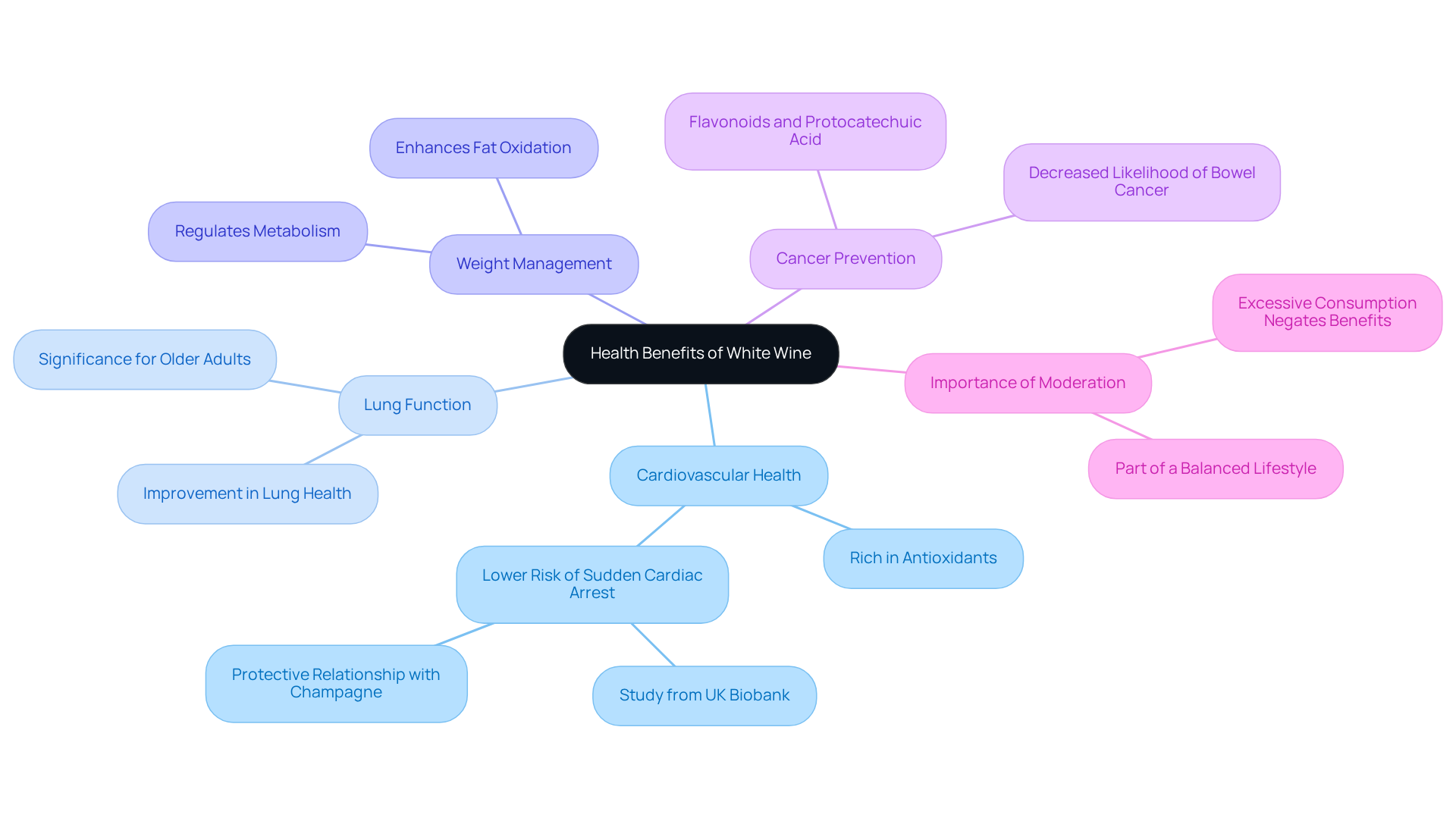
Assess the Risks and Considerations of White Wine Consumption
While the benefits of white wine can include certain health advantages, it is essential to weigh the potential risks associated with its consumption.
- Alcohol-Related Risks: Excessive alcohol intake is linked to numerous health issues, including liver disease, addiction, and an increased risk of various cancers. In 2020, over 740,000 cancer cases worldwide were attributed to excessive alcohol consumption, accounting for 4.1% of all cancer cases.
- Caloric Content: White wine is calorie-dense, and overconsumption can contribute to weight gain if not balanced within daily caloric intake.
- Skin Cancer Danger: Studies show a link between white wine intake and a heightened chance of melanoma, especially in women. Research has indicated that white wine is linked to a 22% greater chance of skin cancer in comparison to red wine, possibly due to substances such as acetaldehyde that heighten skin sensitivity to UV rays.
- Interactions with Medications: Alcohol can interact with various medications, potentially reducing their effectiveness or causing adverse effects, which can complicate treatment regimens.
Grasping these dangers is essential for upholding a healthy lifestyle while savoring white wine.
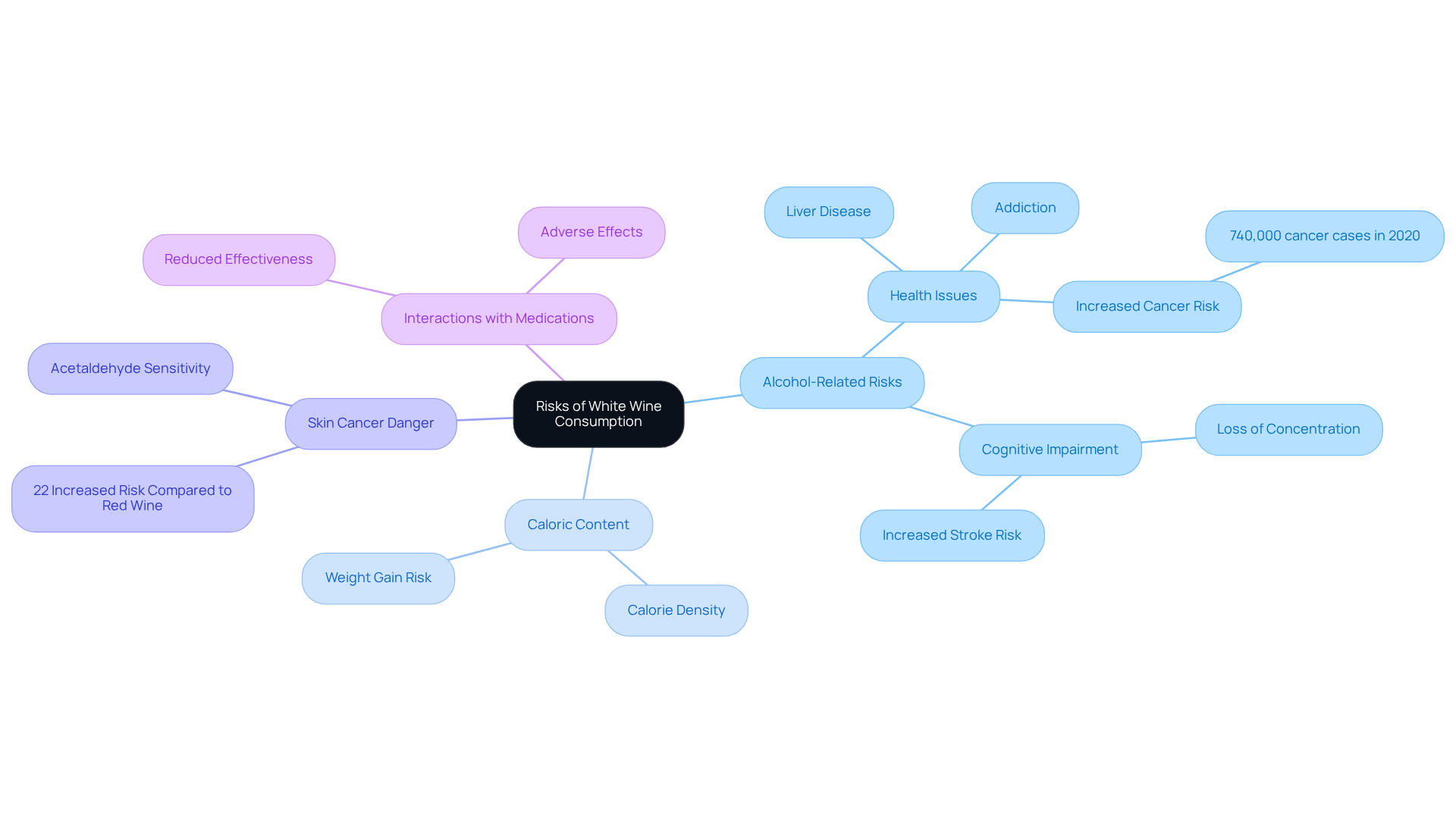
Incorporate White Wine into a Healthy Lifestyle
A healthy lifestyle can be thoughtfully and responsibly enhanced by incorporating the benefits of white wine.
- Moderation is Key: Aim for no more than one glass per day for women and two for men, as recommended by health guidelines. This approach helps to balance enjoyment with health considerations, including the benefits of white wine.
- Combine with Nutritious Foods: Savor white beverages alongside nutrient-rich options like lean proteins, vegetables, and whole grains to maximize the benefits of white wine. This combination not only enhances the flavor but also maximizes the benefits of white wine for health.
- Stay Hydrated: Consume water along with beverages to remain hydrated and lessen the effects of alcohol. Staying hydrated is essential for overall well-being.
- Choose Quality Over Quantity: Select premium beverages with reduced sugar levels and fewer additives to enhance wellness benefits. Quality choices can significantly impact your health outcomes.
- Mindful Drinking: Practice mindful drinking by savoring each sip and being aware of your body’s responses to alcohol. This awareness can lead to a more enjoyable and responsible drinking experience.
By following these guidelines, individuals can enjoy the benefits of white wine while supporting their overall health and wellness.
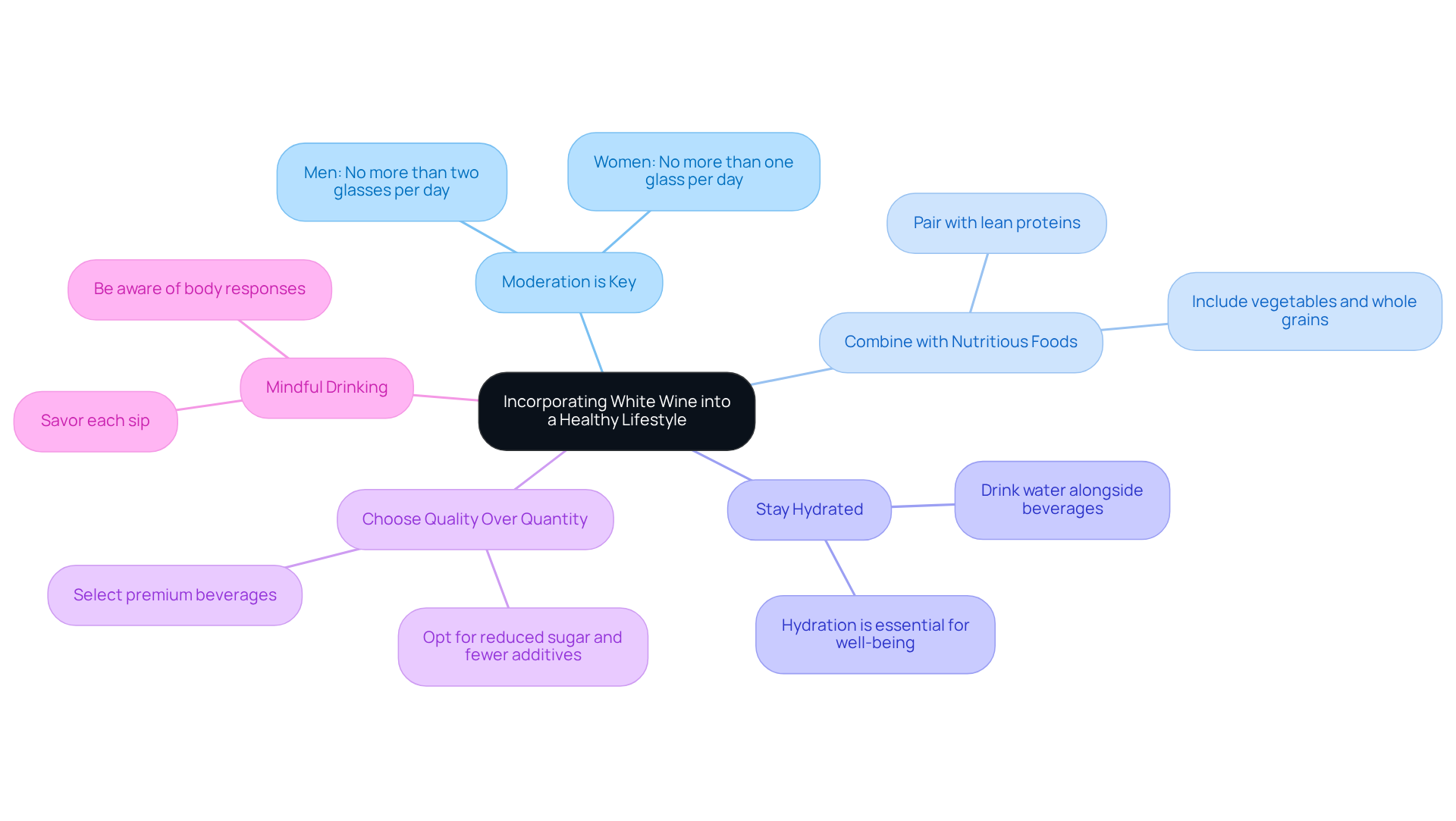
Conclusion
Incorporating white wine into a healthy lifestyle can be a delightful experience when approached with knowledge and moderation. Understanding the composition of white wine—its alcohol content, phenolic compounds, acids, and sugars—enables consumers to make informed choices that align with their health goals. By appreciating the nuances of different varieties, individuals can enjoy the benefits of white wine while being mindful of their consumption.
The exploration of health benefits highlights the potential positive effects of moderate white wine intake. These may include:
- Improved cardiovascular health
- Enhanced lung function
- Possible cancer prevention
However, it is equally important to recognize the associated risks, such as alcohol-related health issues and interactions with medications. Balancing enjoyment with these considerations is crucial for maximizing the advantages of white wine while minimizing adverse effects.
Ultimately, the message is clear: white wine can be a valuable addition to a balanced lifestyle when consumed responsibly. Embracing moderation, pairing with nutritious foods, and practicing mindful drinking can enhance both enjoyment and health benefits. By making informed choices, individuals can savor the pleasures of white wine while supporting their overall well-being, reinforcing the idea that a healthy lifestyle is about balance and thoughtful consumption.
Frequently Asked Questions
What is white wine made from?
White wine is primarily crafted from green or yellow grapes such as Chardonnay, Sauvignon Blanc, and Riesling.
How is white wine produced?
The production of white wine involves a fermentation process that separates the juice from the skins, resulting in its characteristic lighter color and flavor profile.
What is the typical alcohol content of white wine?
The alcohol content of white wine typically ranges from 8% to 14% ABV, with an average concentration of around 10% ABV.
What are the health effects of alcohol in white wine?
Moderate intake of alcohol can be linked to specific health advantages, while excessive consumption presents dangers.
What are phenolic compounds, and why are they important in white wine?
Phenolic compounds, including flavonoids and non-flavonoids, are known for their antioxidant properties, which help combat oxidative stress in the body and may reduce the risk of chronic diseases.
What acids are present in white wine, and what benefits do they provide?
White wine contains organic acids such as tartaric and malic acid, which contribute to its crisp flavor and may assist in digestion.
How do sugar levels vary in white wine?
The leftover sugar level in white wine can vary significantly among different types, affecting both sweetness and caloric content. A 5-ounce glass typically contains around 121 calories and can have anywhere from 1.4g of sugar to higher levels depending on the type.
How can understanding the components of white wine benefit consumers?
Understanding the components of white wine allows consumers to make informed decisions about which beverages to include in their diets, aligning with their wellness objectives.
What is the outlook for the white wine market?
The light beverage market, including white wine, is anticipated to experience significant expansion in the coming years, indicating rising interest among health-aware buyers.





